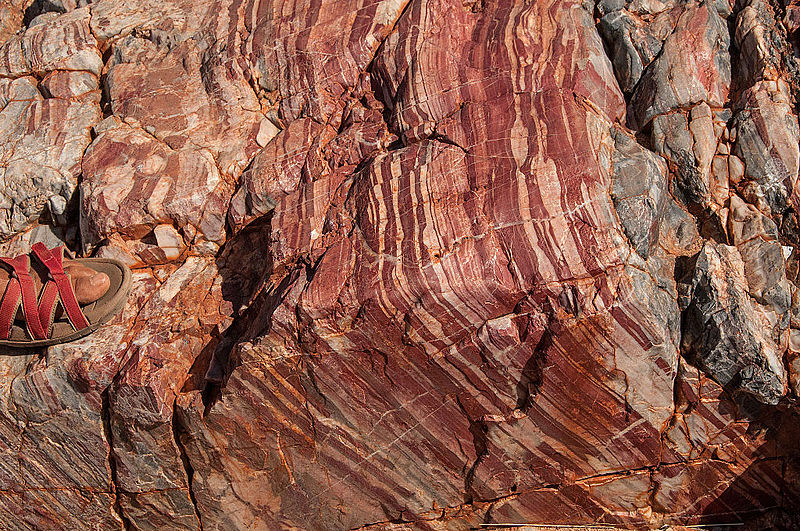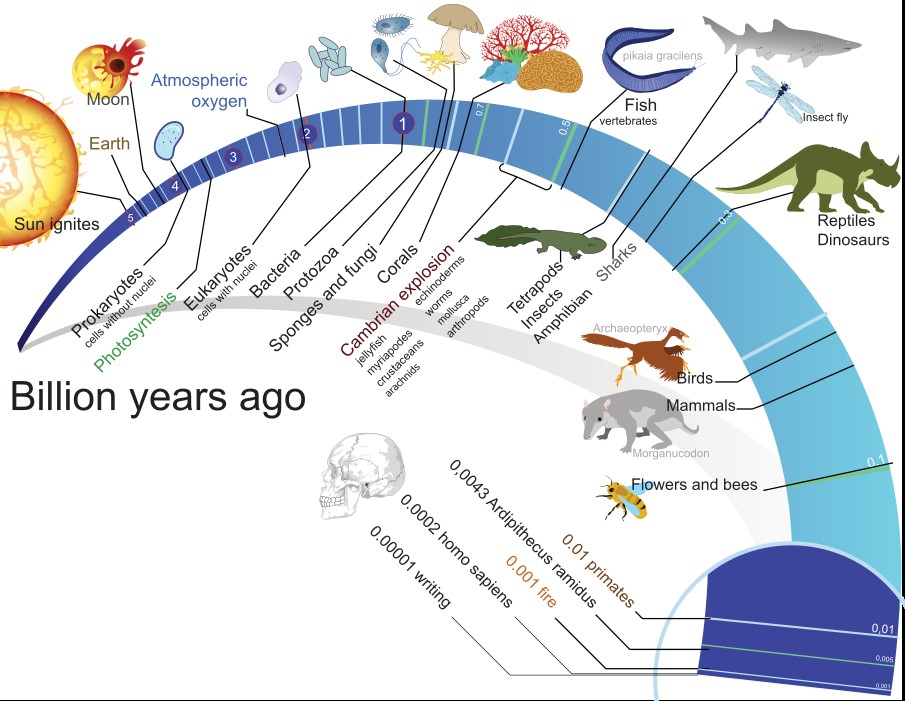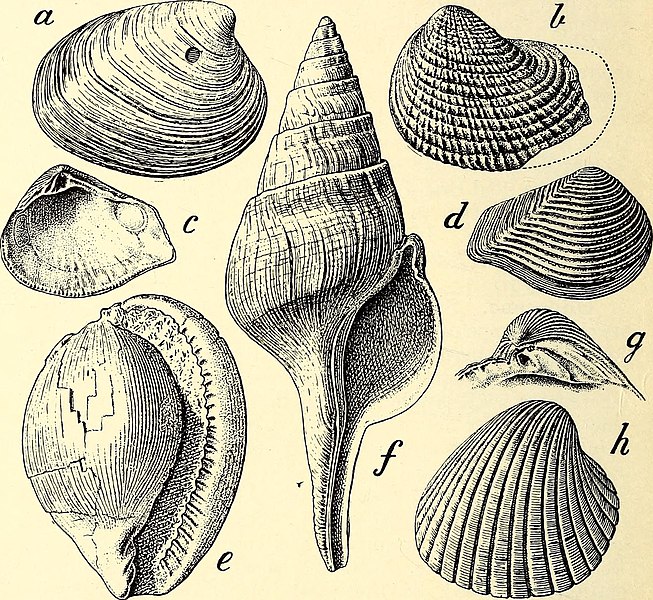The first known organisms to inhabit our planet were anaerobic bacteria that lived in the oceans. The modern life that we see today has evolved from them.
A single cell. That’s how life began on this miraculous planet that today claims itself to be the center of all life in the universe. The journey from that point to you reading this today has been long and tiring, but nothing short of majestic. Determining the form of the first life on Earth is perhaps the singular scientific research problem that has united all the different fields in science including biology, geography, physics, paleontology and many others to find the answers.
Despite all these efforts, we are still only guessing at how life started and evolved on this magical planet of ours. The fossils that indicate the presence of pre-historic life are limited, but there is no guarantee that there was no life before them. So… what do we know as of now? Let’s go back in time and explore!
The Boring Billion
Earth was not always as full of life as it is today. From about 1.7 billion years ago, for a whopping billion boring years, our planet was a dull, near-static world of algae and a few other microorganisms. This long period of inactivity and uneventfulness is known as the Boring Billion throughout the scientific community.
However, even this period was not as boring as it may have first seemed to be, especially if the evolution of eukaryotic life is to be considered. During that “boring billion”, green and purple bacteria appeared in the oxygen-depleted and sulphur-filled waters. These bacteria went on to play a critical role in the diversification of modern life. Multicellularity also appeared for the first time during this period. By the end of the Boring Billion, multicellular algae, fungi and moss had begun to inhabit the earth in its vast oceans. The question is, how did scientists come to know about all of this?
Also Read: How Long Did It Take For Multicellular Life To Evolve From Unicellular Life?
How Did Scientists Learn About The First Life On Earth?
Scientists came to know about the earliest forms of life on our planet from the fossils found among aged and preserved rocks. The oldest of these minerals and the fossils embedded in them are said to be 3.5 billion years old. The best examples of these are the Apex chert rocks, found in western Australia. The earth is about 4.5 billion years old, and for the first 500 million years, it was just one massive ocean. As such, no rocks existed that could indicate whether life existed or not.
However, some biogenic graphite and other sedimentary rocks found in southwestern Greenland were dated at 3.7 billion years into the planet’s life. These numbers are still hotly debated in some circles, as the earliest undisputed evidence of life on our planet dates back 3.5 billion years.

Also Read: What Was The Great Oxygenation Event?
What Was The First Life On Earth Like?
The first known organisms to inhabit our planet were prokaryotic anaerobic microorganisms (or bacteria, as we call them today) that lived in the seas and oceans. Prokaryotes are primitive organisms that lack a nucleus or other membrane-bound organelles. They relied on whatever molecules they could find in the water, and their energy-producing mechanism did not involve oxygen, as it was not yet present in our atmosphere. These organisms soon evolved into something we now know as cyanobacteria. Photosynthesis occurred in these organisms, which is how the atmosphere was enriched with precious oxygen.

Cyanobacteria or blue algae made the primitive atmosphere breathable and allowed life to colonize the lands above sea level. Now, colonize here has an exceptional meaning. In biology, a colony is composed of two or more conspecific (having similar characteristics) individuals living in close association with, or connected to, one another. The photosynthesizing cyanobacteria were engulfed and captured by organisms of larger sizes. The bacteria were then able to survive inside the controlled environment of their hosts, providing them with a portion of the food they produced. Many cell organelles, such as the chloroplasts and mitochondria found in animals and plant cells today, have evolved from such prehistoric bacteria.
The Cambrian Explosion
The Cambrian Explosion wasn’t literally an explosion, but rather an event that involved the migration of the first complex terrestrial life out of the water and onto the newly formed crust of our planet. It was an explosion of life that happened approximately 540 million years ago, and it was during this period that most modern eukaryotic Animalia began appearing and were subsequently recorded in the forms of fossils.

The fundamental ecological structure of modern marine communities was firmly established during the Cambrian Era. Small Shelly Fossils found in various parts of the world are the best indicators of the life that persisted throughout this period. Before the Cambrian Explosion, most organisms were simple, composed of individual cells that were occasionally organized into colonies. As the rate of diversification accelerated, the variety of life began to resemble what we see today, and the rest, as they say, is history.
A Final Word
About 3 billion years and a planet full of resources… that’s what it took for life to reach the point it is today. Perhaps that’s why it’s so special. The earliest life forms on Earth were single-celled prokaryotes and anaerobic organisms that managed to survive harsh climatic conditions, making the atmosphere more suitable for complex lifeforms at the cost of their own life.
On the other hand, human civilization has caused the extinction of millions of species to improve their levels of comfort and luxury. We stole something from this planet that was never ours to begin with. And if conservationists are to be heard and believed, karma is real, and will strike back in the form of ecological imbalance. The earth has survived for billions of years, and will continue for many more, but whether the human race will be a part of it depends on our actions from this point forward!
How well do you understand the article above!

References (click to expand)
- Earth's (Not So Boring) Boring Billion - Science News. Science News
- Oldest fossils ever found show life on Earth began before 3.5 .... The University of Wisconsin–Madison
- The first organisms - Eniscuola - www.eniscuola.net
- Lacroix, B., & Citovsky, V. (2016, September 7). Transfer of DNA from Bacteria to Eukaryotes. (S. C. Winans & R. J. Collier, Eds.), mBio. American Society for Microbiology.
- The Cambrian Explosion - Origin of Animals and the Cambrian Explosion - Science - The Burgess Shale - burgess-shale.rom.on.ca
